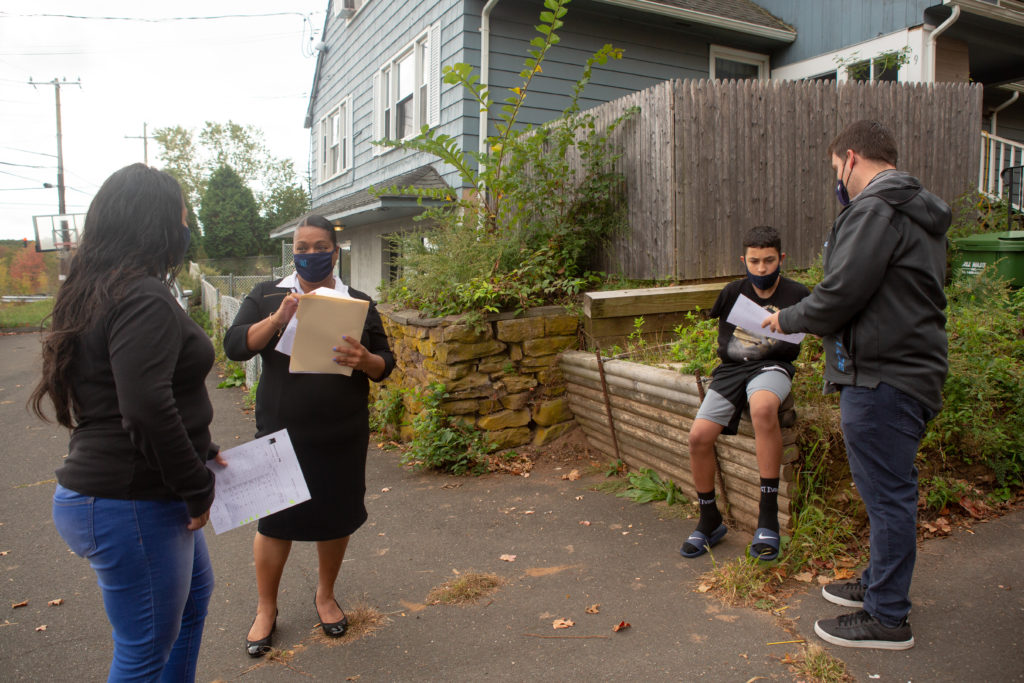During the COVID-19 pandemic, schools across the country have been trying new approaches in their communication with multilingual families. As a result of that outreach, many schools have discovered new tools and strategies that have strengthened their engagement with families of English-language learners (ELLs) during this challenging time.

The following success stories from districts around the country show what is possible when schools and families team up as true partners—and show the power of sharing those stories publicly! You can learn more about these districts from the links at the end of this post.
A note on privacy
Please read these privacy and security considerations for ELLs and immigrant families if you are considering using any of the tech tools mentioned in this article.
1. Brockton, MA: Multilingual Health Services and Support
The Brockton Public School district has developed a robust network of support for its multilingual families during the past several years, including within its nursing department. During the pandemic, bilingual nurses, English-speaking nurses, interpreters, and family liaisons have all collaborated closely to stay connected with families. For example, early in the pandemic, the district provided nurses with dedicated cell phones that families could call with questions.
The nurses’ responsibilities have also included:
- Contact tracing
- Sharing safety practices
- Providing updates about COVID-19 and vaccines in multiple languages
- Administering COVID-19 vaccines to Brockton first responders, members of the community, district employees, students, and families
The nursing team expects to continue administering COVID-19 vaccines (and answering families’ questions) once vaccines are available for younger students.
2. Douglas County, CO: How an App Is Supporting Family Outreach
Like many districts around the country, Douglas County has adopted Talking Points, a translation texting app that can facilitate communication with multilingual families in many languages. (Apps like this are best for check-ins and reminders rather than communication that requires an interpreter.) Educators have used the app to connect with families, send reminders, and send videos with closed captions. Nurses, administrators, and secretaries are now also starting to use the app.
Becky Corr, an EL Educator and Language, Culture, and Equity Team Lead, is encouraging educators to draw upon that communication for inspiration this year. She says, “I’m asking teachers to bring a favorite message from a family, post the messages (and) celebrate them throughout the year. During tough times, we need to be reminded of why we do this.”
3. Roseville, MN: Online Family Outreach via Facebook and Zoom
At the start of the pandemic, Kristina Robertson, the English Learner Program Administrator at Roseville Public Schools, realized that multilingual families were getting inundated with bilingual robo-calls. In consultation with the district’s cultural liaisons, the EL team created a series of multilingual and cultural Facebook pages. Many families were already using Facebook, and they liked viewing messages and posting questions or comments at their convenience.
The team also began to record videos through multilingual Facebook Live sessions since many of Roseville’s families are refugees who did not have an opportunity to develop literacy skills in their first language or English. The data show that these videos have been viewed hundreds of times after events. For example, one of their first Karen Facebook Live videos was seen by 3,000 people—even though the district only has about 350 Karen students.
In addition, the district has used Zoom for school-based town hall meetings, although staff note that logging in and navigating Zoom can be challenging for families. Nevertheless, the use of online family meetings has expanded outreach, especially since childcare and transportation often impeded family engagement before the pandemic.
4. Austin, TX: Welcoming Afghan Refugee Families
The Austin Independent School District currently has more than 300 Afghan students, and the district is preparing to welcome nearly 100-200 Afghan refugee families in the coming months. The district is working closely with its Afghan cultural liaisons and community partners to identify:
- Culturally appropriate ways of communicating with Afghan families
- How to best partner with and support families who have experience significant trauma and upheaval
- Professional development topics for staff
Salimah Shamsuddin, the Refugee Family Support Coordinator, notes that the Refugee Family Liaisons’ relationships with families are essential for building trust. She writes, “The liaison’s knowledge, skills, and competencies make them an effective advocate for our families and provide the families with the tools and resources they need to be successful.”
Closing Thoughts
As these examples show, there is no “one-size-fits-all” approach to working with multilingual families. Successful outreach depends on relationships, good communication, and a willingness to listen—and it can yield rewards far greater than anyone anticipated. We hope these examples offer some ideas (and inspiration!) as you continue developing new family partnerships within your own dynamic school communities.
For additional information, see the following:
- Multilingual Family Outreach in Brockton, MA
- How to Use Technology to Engage Multilingual Families
- Welcoming Afghan Families: Lessons Learned from Austin ISD
- Strengthening Partnerships with ELL Families: 15 Strategies for Success
- How School Leaders New to Working ELLs Can Partner with Families
- 10 Steps Leaders Can Talk to Support ELL Success in 2020-2021
- Engaging ELL Families: 20 Strategies for School Leaders
- Meet the Administrator: Video Interviews with ELL Leaders
